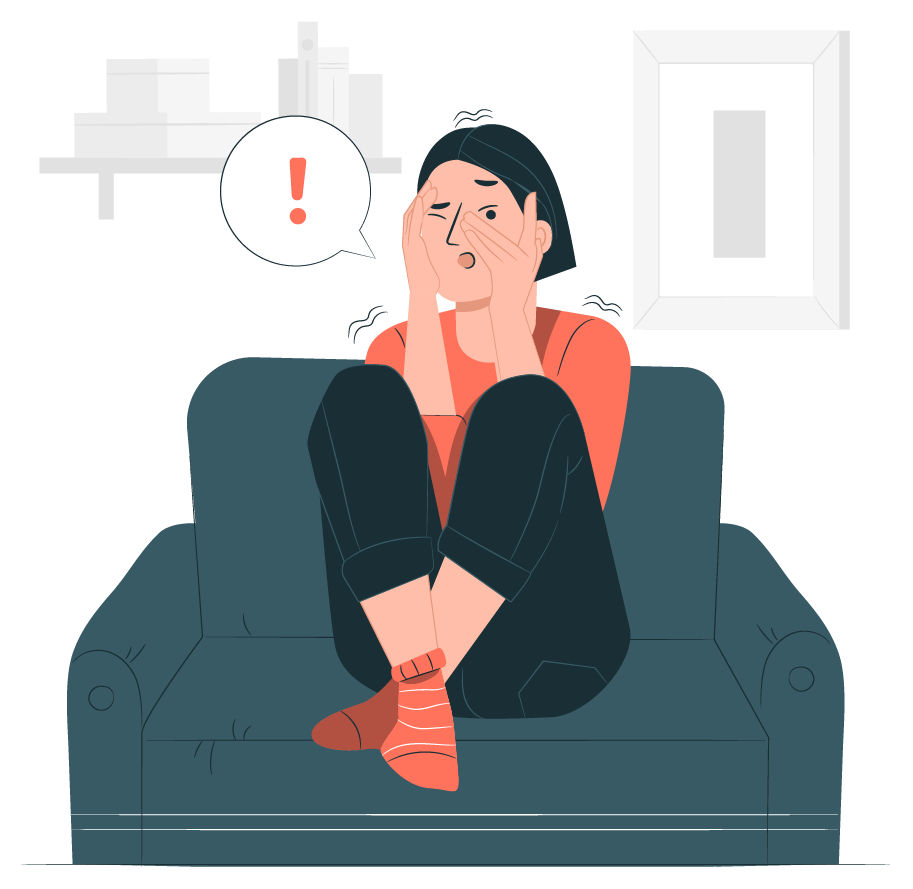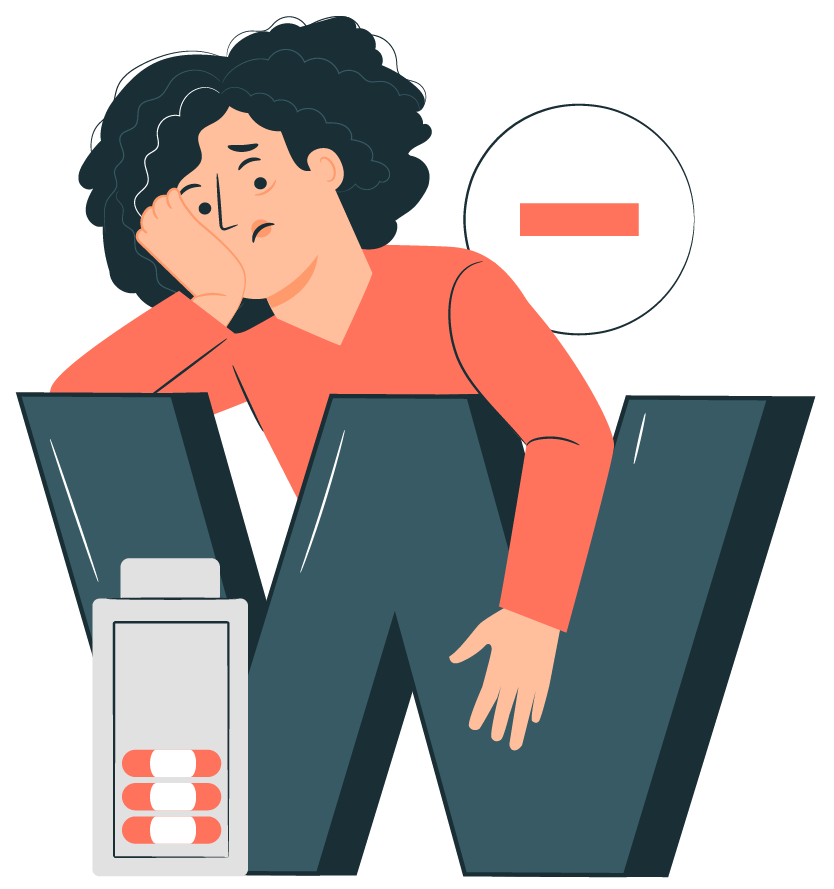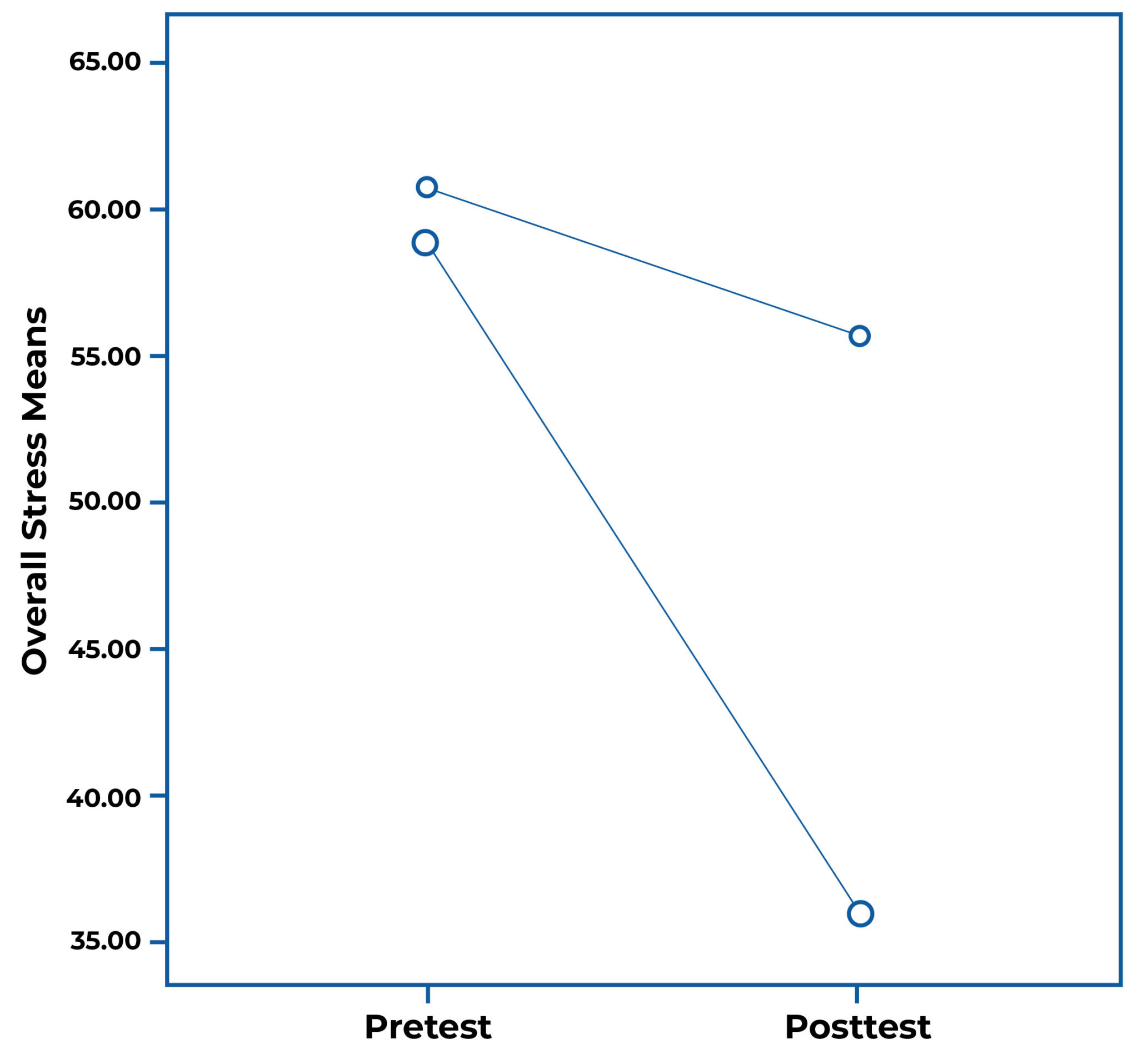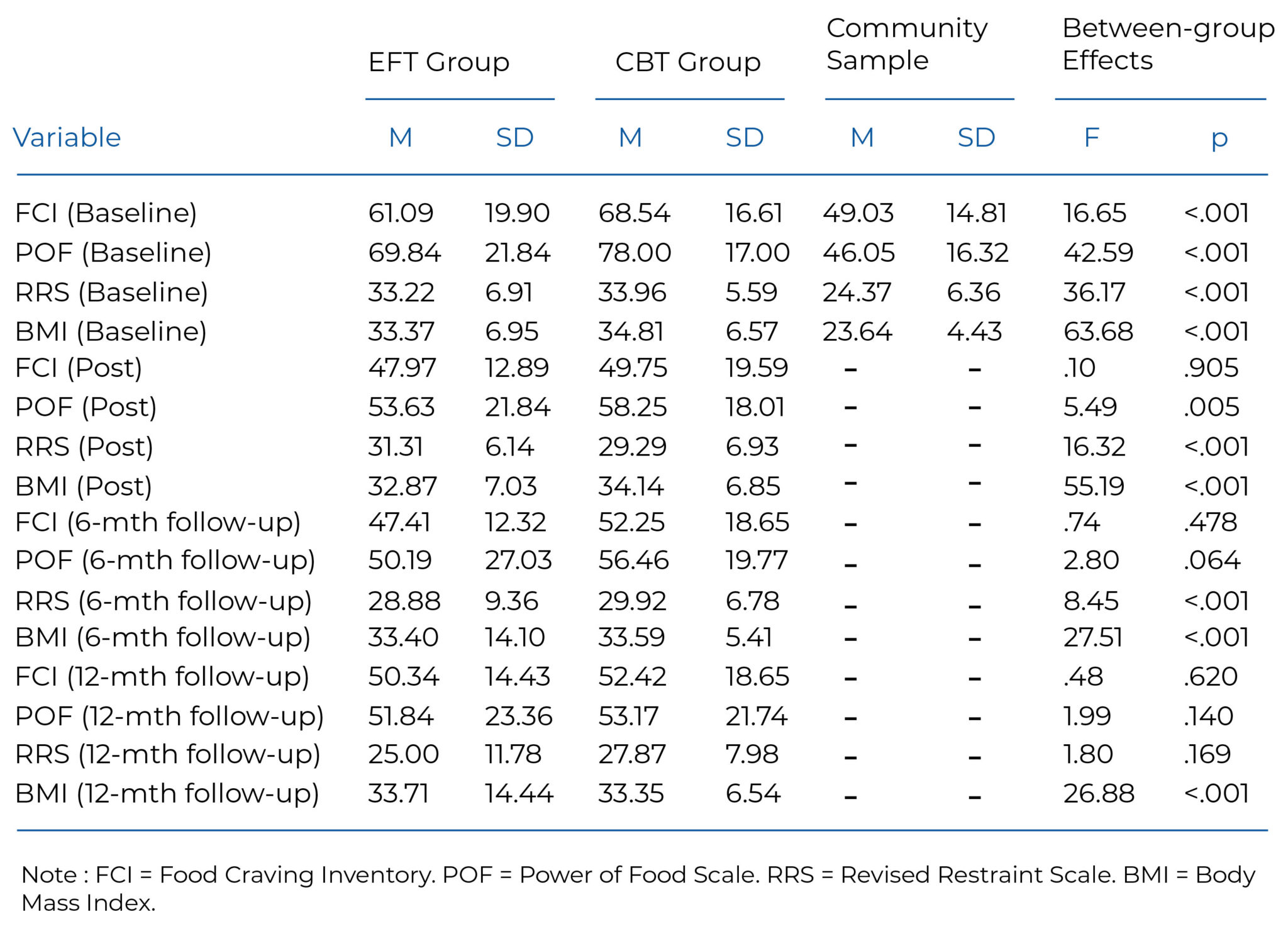Blog » Statistics » 162 Emotional Freedom Technique Statistics
162 Emotional Freedom Technique Statistics
The emotional Freedom Technique is an alternative treatment for emotional distress and physical pain. EFT tapping has been used to treat patients with Post Traumatic Stress Disorder [PTSD] and anxiety. Today I have collected the most important and up-to-date list of EFT statistics going through various sources.
On this page you’ll find handpicked stats about:
- Anxiety and stress
- Depression
- Physical symptoms and improvement
- Phobias
- PTSD
- Weight Loss and Addiction
And a whole lot more.
Without further ado, let’s see the stats!

chapter 1:
Anxiety & Stress
Here I have covered EFT statistics related to anxiety and stress.
I went through various case studies and research-oriented statistics to give you up-to-date statistics.

- The goal of the current study was to determine whether EFT could quickly reduce stress symptoms in college students, and to compare the efficacy of acupoint stimulation to the stimulation of sham points. Participants were 56 university students randomly assigned to either the EFT (n = 26) or sham group (n = 30). There were no significant differences in stress symptoms between the two groups at pre-test. Post-test, symptoms were reduced in the EFT group by 39.3% and in the sham acupressure group by 8.1% (p < .001), demonstrating that the stimulation of actual points is superior to sham points even when all other components of treatment remain identical. (Source)
- The current study assessed psychological indicators in business owners (N = 39) over 50 years old and whose companies grossed US$9 million or more annually. Consistent with the literature on Borrowing Benefits, EFT produced large reductions in stress symptoms when delivered in group format. As businesses seek methods of reducing stress in professional settings, Clinical EFT groups offer a fast and effective technique to improve both the physical and psychological dimensions of employee well-being. (Source)
- The study aims to investigate the efficacy of a brief online form the Emotional Freedom Techniques (EFT) in the prevention of stress, anxiety, and burnout in nurses involved in the treatment of COVID patients. Reductions in stress (p < .001), anxiety (p < .001), and burnout (p < .001) reached high levels of statistical significance for the intervention group. The control group showed no statistically significant changes on these measures (p > .05). (Source)
- To address student anxiety, a pilot study using Emotional Freedom Techniques (EFT) was developed. The mixed-methods pilot study measured participants’ (n = 45) subjective distress and anxiety before and after using EFT. Subjective distress/anxiety was invoked through a 15-min assignment lecture. Twelve of the 45 students also participated in one-one interviews to elaborate on their experiences of EFT. Quantitative findings indicated participants reported significantly less subjective distress and anxiety after using EFT. (Source)
- The average decrease in experienced distress for treated participants was 74% or better, and the average amount of time needed to achieve the results was less than 6.04 minutes, which indicates that Thought Field Therapy (TFT) causes changes very quickly. TFT and EFT practitioners often find similar rapid results in their clinical practices. (Source)
- The pre-post effect size for the EFT treatment group was 1.23 (95% confidence interval, 0.82-1.64; p < 0.001), whereas the effect size for combined controls was 0.41 (95% confidence interval, 0.17-0.67; p = 0.001). (Source)
- Emotional freedom technique treatment demonstrated a significant decrease in anxiety scores, even when accounting for the effect size of control treatment. (Source)
- Across 12 anxiety-tapping meditations, the difference in emotional intensity ratings from presession (mean 6.66, SD 0.25) to post session (mean 3.75, SD 0.30) was statistically significant (P<.001; 95% CI −2.92 to −2.91). (Source)
- Across 11 stress-tapping meditations, a statistically significant difference was found from presession (mean 6.91, SD 0.48) to post session (mean 3.83, SD 0.54; P<.001; 95% CI −3.08 to −3.07). (Source)
- Statistically significant improvements in Total Mood Disturbance (p=0.005; p=0.008), and anxiety (p=0.003; p=0.028), depression (p=0.006; p=0.020) and fatigue (p=0.008; p=0.033) occurred at both 6 and 12 weeks, respectively, compared to baseline. (Source)
- Mean fatigue interference and global scores, numbers of hot flushes and the hot flush problem rating score decreased at 6 and/or 12 weeks. (Source)
- Meridian-based intervention (EFT) was more effective (mean = 33.78) than numerical cognition (mean = 45.35) in the reduction of mathematics anxiety. (Source)
- There was a significant main effect F(1, 109 = 21.00, p < 0.01), interactive effect F(2, 109 = 6.116, p < 0.01). Of mathematics efficacy and treatment of mathematics anxiety of the participants. (Source)
- There was a significant reduction in SUDS (p=0.002), HAD (p = 0.048) and HAD Anxiety Subscale (p=0.037). (Source)
- There was no difference in the HAD Depression Subscale (p=0.719). (Source)
- A significant reduction in Public Speaking Anxiety (PSA) as measured by Subjective Units of Discomfort was demonstrated within the first 15 minutes of treatment with EFT, with further significant reductions also demonstrated at 30 and 45 minutes. (Source)
- Before the administration of Breathing Therapy and EFT, the students’ median scores from the Subjective Units of Disturbance Scale, State-Trait Anxiety Inventory, and Speech Anxiety Scale were similar. However, the median scores of the Subjective Units of Disturbance Scale, State-Trait Anxiety Inventory, and Speech Anxiety Scale scores significantly decreased in both of the experimental groups after the interventions (p < 0.001). (Source)
- EFT (d = 3.18) was more effective than Breathing Therapy (d = 1.46) in reducing speech anxiety. (Source)
- Veterans were assessed using the SA-45, which measures 9 mental health symptom domains, and also has 2 general scales measuring the breadth and depth of psychological distress. Anxiety and depression both reduced significantly, as did the breadth and depth of psychological symptoms. Pain decreased significantly during the intervention period (– 41%, p < .0001). (Source)
- Subjects were followed at 3 and 6 months, revealing significant relationships between PTSD, depression, and anxiety at several assessment points. At follow-up, pain remained significantly lower than pre-test. (Source)
- The women in the EFT and BA groups were offered their intervention in the latent, active and transition phases of labour. There was no significant difference in the sociodemographic and obstetric factors between the groups (p > 0.05). The Subjective Units of Distress Scale in active and transition phases were significantly lower in the EFT group. (Source)
- The difference in the scores for the Wijma Delivery Expectancy/Experience Questionnaire (version B) between the groups was significant (p < 0.001). (Source)
- A statistically significant decrease occurred in the test anxiety scores of both the experimental and control groups. The EFT group had a significantly greater decrease than the PMR group (p < .05). (Source)
- The scores of the EFT group were lower on the Emotionality and Worry subscales (p < .05). Both experimental and control groups scored higher on the test examinations after treatment. (Source)
- There was a significant reduction in SUDS (p=p<0.001), HAD (p = 0.003) and HAD Anxiety Subscale (p<0.001). There was no difference in the HAD Depression Subscale (p=0.67). The qualitative data were analysed using a framework approach which revealed the following three themes: helpfulness of EFT in reducing anxiety and staying calm and focussed; Using other complementary therapy skills; and their reasons for not using EFT. (Source)
- Women admitted for OBG surgeries were selected through consecutive sampling. The two groups were similar at baseline. While there was no change in anxiety in the control group, anxiety scores in the EFT group dropped from 27.28 (± 2.47) to 7.60 (± 2.00) and were highly statistically significant (p < 0.0001). Reductions in both psychological and somatic anxiety subscales were also significant (p < 0.002). (Source)
- A computer-based random number generator was used to randomly assign the students into three groups (Music, EFT, and control). Before the interventions, the mean anxiety scores of the students were similar. After the interventions, however, the mean anxiety scores of those in both experimental groups were significantly lower (p < .05). The difference between the mean vital signs of the groups was not statistically significant, except the pulse rate in the EFT and peripheral capillary oxygen saturation (SpO2) in the music group. (Source)
- Results showed a significant improvement in fear of failure, whereby fears were significantly lower from pre-intervention to 12-month follow-up. (Source)
- Findings indicated a significant main effect of time for emotional and behavioural difficulties, however post hoc tests indicated no statistically significant changes between the time points measured. (Source)
- No significant changes after EFT were observed in measures of self-esteem or resilience. (Source)
- Findings of the study depict that both intervention approaches produce significant reductions in anxiety and depressive symptoms. The EFT treatment produced marked improvement in depression after 3 sessions. After 8 weeks of intervention, the CBT group reported significant improvement in depression while EFT intervention therapy showed significant results after 1 month of follow up. Examination of individual cases showed clinically significant improvement in anxiety and depression across both interventions. The results are consistent with the previous studies by Hannah Chatwin et al. (2016). (Source)
- The study demonstrates that EFT is effective in reducing presentation anxiety in cohorts of students regardless of age or gender. The findings are remarkably similar to previous research (Boath et al., 2012a, 2012b, 2013). The results demonstrate a statistically significant reduction in anxiety level for different cohorts of students, as well as a clinically significant reduction in anxiety for the sports science students. (Source)
- Significant improvements were found on all distress subscales and ratings of pain, emotional distress, and cravings at post-test (all p<.001). (Source)
- Gains were maintained at follow-up for most SA-45 scales. (Source)
- The severity of psychological symptoms was reduced (-45%, p<.001) as well as the breadth (-40%, p<.001), with significant gains maintained at follow-up. (Source)
- Greater subsequent EFT use correlated with a greater decrease in symptom severity at follow-up (p<.034, r=.199), but not in breadth of symptoms (p<.0117, r=.148). EFT provided an immediate effect on psychological distress, pain, and cravings that was replicated across multiple conferences and healthcare provider samples. (Source)
- The study examined the effectiveness of group counselling sessions using two methods: systematic desensitization and emotional freedom technique (EFT). The two methods were each administered in two group counselling sessions. 16 students having high levels of public speaking anxiety were chosen from a group of 100 students by using purposive sampling. The results were analysed using mixed anova repeated measures tests. These showed that both systematic desensitization and EFT were effective in reducing public speaking anxiety when delivered in a group counselling format. Based on score and time, EFT resulted in greater decreases in symptoms than systematic desensitization. (Source)
- Anxiety and depression scores regarding food cravings and obesity significantly decreased from pre-to post-intervention for the EFT group, and was maintained at 6- and 12-month follow-up. (Source)
- Somatoform scores significantly decreased from pre-intervention to all follow-up points for the CBT group, while the EFT group did not report any significant changes in somatoform symptoms. (Source)
- Results revealed that EFT is capable of producing reductions in anxiety and depression symptoms for obese people, and may be comparable to gold standard approaches such as CBT. (Source)
- Decreases in anxiety as measured on both the STAI and PSS were statistically significant (p = .05). For PSS, STAI state and trait data, the reduction in self-reported stress was statistically significant with a mean difference baseline to week 4. Qualitative data suggested that nursing students experienced a decrease in feelings of stress and anxiety including a decrease in somatic symptoms. (Source)
- Pre- and post-intervention, all participants were interviewed using the Mini- International Neuropsychiatric Interview (MINI) 6.0, and they completed the following validated questionnaires: (1) the Beck Depression Inventory, second edition (BDI-2) and (2) the Depression, Anxiety, and Stress Scales (DASS-21). Findings revealed that both treatment approaches produced significant reductions in depressive symptoms, with the CBT group reporting a significant reduction post-intervention, which was not maintained with time. The EFT group reported a delayed effect involving a significant reduction in symptoms at the 3- and 6-mo follow-ups only. (Source)
- The present study examined the effectiveness of Emotional Freedom Techniques (EFT) on the reduction of stress for preschool teachers. The study was conducted according to a single-subject design (N=2), in which levels of stress and anxiety were measured before and after the five-week training of EFT. Following the completion of training, both participants in the study reported decreased levels of stress and anxiety. However, at six month follow up, results were more varied. (Source)
- The result showed significant differences between anxiety levels before and after the EFT intervention (p < 0.05) and significant differences in the intensity of anxiety after intervention between intervention and control groups (p < 0.05). The research conclusion is that EFT can reduce anxiety levels in patients undergoing Percutaneous Coronary Intervention (PCI). (Source)
- EFT is an efficacious intervention to significantly reduce anxiety for high-ability adolescents. EFT participants (n = 20; M = 52.16, SD = 9.23) showed significant reduction in anxiety levels compared with the waitlist control group (n = 21; M = 57.93, SD = 6.02) (p = 0.005, d = 0.74, 95% CI [−9.76, −1.77]) with a moderate to large effect size. CBT participants (n = 21; M = 54.82, SD = 5.81) showed reduction in anxiety but did not differ significantly from the EFT (p = 0.18, d = 0.34; 95% CI [−6.61, 1.30]) or control (p = 0.12, d = 0.53, 95% CI [−7.06, .84]). (Source)
- The study examined the anxiety levels of gifted students, as well as the effectiveness of two interventions: Cognitive-Behavioural Therapy (CBT) and Emotional Freedom Technique (EFT). EFT participants (n= 20, M = 52.163, SE = 1.42) showed significant reduction in anxiety levels when compared to the control group (n= 21, M = 57.93, SE = 1.39, p = .005). CBT participants (n= 21, M = 54.82, SE = 1.38) did not differ significantly from either the EFT or control groups (p = .12 and p = .18, respectively). (Source)
- The study explored test anxiety benefits of Wholistic Hybrid derived from EMDR (WHEE), Emotional Freedom Techniques (EFT), and Cognitive Behavioural Therapy. Despite small sample size, significant reductions on the TAI and HSCL-21 were found for WHEE; on the TAI for EFT; and on the HSCL-21 for CBT. There were no significant differences between the scores for the three treatments. In only two sessions WHEE and EFT achieved the equivalent benefits to those achieved by CBT in five sessions. Participants reported high satisfaction with all treatments. EFT and WHEE students successfully transferred their self-treatment skills to other stressful areas of their lives. (Source)
- There were significant improvements in the severity and breadth of symptoms pre- and post-workshop (p < .001), and following 3 of the 4 conferences there were significant long-term gains (p < .001). The results indicate that EFT may be effective at reducing psychological symptoms when delivered by individuals other than the method’s founder and that EFT may reliably improve long-term mental health when delivered in brief group treatments. (Source)
- Psychological symptom severity (GSI) improved post-workshop, demonstrating both clinical (raw score) and statistical significance (-56.43%, p=.043). Improvements (T score) (-50.67%, p=.002) were sustained at three 3-month follow-up (-50.54%, p=.001; -38.43%; p=.002). (Source)
- Symptom breadth (PST) improved post-workshop clinically (-49.24%, p=.005), and that improvement was sustained over time (-46.93%, p=.019). (Source)
- Skindex-29 scores indicated improvements in emotional distress (-41.56%, p=.002), symptoms (49.05%; p=.001), and functioning (-58.31%; p=.001) post-workshop, with changes over time to -80.56% (p=<.001), -74.95% (p=<.001), and -89.99% (p=.001) respectively, and at 3 months. (Source)
- The preliminary study aimed to explore whether Emotional Freedom Techniques (EFT) offers potential as a treatment to reduce fear of future panic attacks in women who suffer from panic attacks. Eight women participated in the study. Outcomes were measured using the Subjective Units of Distress (SUD) scale and the Panic and Agoraphobia Scale (PAS). Results indicated reductions in both SUD and PAS scores at pre- and post-intervention, though not statistically significant, likely due to the small sample size. Nonetheless, the findings of The study support preliminary evidence that EFT may offer potential as a treatment for women with panic disorder. (Source)
- Adult patients awaiting dental treatment were screened for self-reported anxiety using an 11-point Likert scale. Those in the higher half of the range (N = 30) received a 10-minute intervention consisting of a 4-minute EFT (Emotional Freedom Techniques) explanation and 6-minute treatment. All patients reported a decrease in subjective anxiety, with a mean pre-treatment score of 8.03 and a post-treatment score of 3.03. Paired t-tests revealed a statistically significant decrease (p<0.001). (Source)
- The pilot study explored the effectiveness of Emotional Freedom Techniques (EFT) as a treatment for dental anxiety. The mean STAI-S(sf) scores obtained by the control group before (x = 62) and after (x = 59) differed by only 3 points (–6%). In contrast, the mean STAI-S(sf) score obtained by the EFT group before tapping acupressure points (x = 72) dropped 26 points (x = 46, –35%). An ANOVA revealed a statistically significant within subjects main effect of Time (F = 6.76, p = .04), and a Treatment Group x Time interaction (F = 4.42, p = .08), which approached statistical significance. (Source)
- The aim of The study was to examine if self-administered EFT (Emotional Freedom Techniques) leads to reduced pain perception, increased acceptance, coping ability and health-related quality of life in individuals with fibromyalgia. Upon completion of the program, statistically significant improvements were observed in the intervention group (n=26) in comparison with the waiting list group (n=36) for variables such as pain, anxiety, depression, vitality, social function, mental health, performance problems involving work or other activities due to physical as well as emotional reasons, and stress symptoms. (Source)
- Pain catastrophizing measures, such as rumination, magnification and helplessness, were significantly reduced, and the activity level was significantly increased. (Source)
- The main presenting conditions were anxiety, depression and anger and clients revealed up to 4 additional issues. CORE10, Rosenberg Self-Esteem, HADS Anxiety and HADS Depression scores showed both statistically and clinically significant improvements, with statistically significant improvement for WEMWBS (all p<0.01). Mean CORE10 scores improved from 20.16 (moderate severe) at start to 8.71 (normal) at end (SD difference=6.81, p<0.001). Improvements were seen in all but one client. (Source)
- Three patients with panic disorders were treated with oriental medical treatments which involved acupuncture, herbal medications, moxibustion and emotional freedom techniques. After treatment, both physical and psychological symptoms decreased. (Source)
- The effectiveness of the Emotional Freedom Technique (EFT), a treatment for anxiety and fear, was assessed. One hundred nineteen university students were assigned and tested in an independent four-group design. The groups differed in the treatment each received: applied treatment of EFT (Group EFT); a placebo treatment (Group P); a modelling treatment (Group M); and a control (Group C). Participants’ self-reported baseline and post-treatment ratings of fear were measured. Group EFT showed a significant decrease in self-report measures at post-treatment. However, Group P and Group M showed a similar significant decrease. Group C did not show a significant decrease in post-treatment fear ratings. These results do not support the idea that the purported benefits of EFT are uniquely dependent on the “tapping of meridians.” Rather, these results suggest that the reported effectiveness of EFT is attributable to characteristics it shares with more traditional therapies. (Source)
- The study seeks to determine the efficacy of a single brief intervention—Emotional Freedom Techniques (EFT)—to support the ability to shift attention appropriately to achieve optimal levels of both test anxiety and test performance. The sample consisted of 150 undergraduates from three universities in the Inland Northwest USA with debilitating test anxiety who were randomly assigned to 3 different groups. Group 1 learned EFT, Group 2 learned Diaphragmatic Breathing (DB), and Group 3 served as a no-treatment control. Subsequent ANOVAs revealed significant improvements in both the diaphragmatic breathing and EFT groups on most measures, with gains maintained on follow-up. (Source)
- Using a time-series, within-subjects repeated measures design, 102 participants were tested with a short-form of the SCL-90-R (SA-45) 1 month before, at the beginning of the workshop, at the end of the workshop, 1 month after the workshop, and 6 months after the workshop. There was a statistically significant decrease (p < .0005) in all measures of psychological distress as measured by the SA-45 from pre-workshop to post-workshop which held up at the 6-month follow-up. (Source)
- The symptoms of anxiety as measured by the DASS21 generally continued to reduce after treatment with Clinical EFT had concluded. The Stress scale of the DASS 21 indicated a mild improvement at a clinical level in some cases. (Source)
chapter 2:
Depression
Here are the statistics on EFT related to depression.
This section sheds light on case studies done on people of various stages in life struggling with depression.

- The total intervention group (i.e., both the CBT and the EFT groups) consisted of 10 participants, composed of 8 women and 2 men. The community group consisted of 57 participants, including 45 women and 12 men. Baseline data also revealed that the majority of members of the 2 intervention groups reported significant emotional difficulties, with 80% indicating a clinically significant depression and 60% indicating a clinically significant anxiety. The average attendance rate at sessions was 6.64 sessions for the total sample. (Source)
- Demographic analyses indicated no significant differences between groups in relation to gender, age, marital status, or educational level. (Source)
| Variable | CBT Group (n = 4) Mean = SD | EFT Group (n = 6) Mean = SD | Control Group (n=57) Mean = SD |
| DASS-21 (Baseline) | 7.75 = 4.99 | 6.67 = 4.13 | 1.93 = 3.16 |
| BDI-2 (Baseline) | 30.00 + 9.20 | 30.67 = 11.00 | 2.46 = 3.31 |
| DASS-21 (Post) | 3.75 = 2.36 | 6.17 = 3.87 | – |
| BDI-2 (Post) | 9.50 = 8.70 | 21.83 = 14.86 | – |
| DASS-21 (3-mo follow-up) | 2.75 = 2.75 | 3.83 = 3.54 | – |
| BDI-2 (3-mo follow-up) | 11.00 = 12.08 | 20.00 = 10.88 | – |
| DASS-21 (6-mo follow-up) | 3.25 = 4.03 | 5.17 = 4.79 | – |
| BDI-2 (6-mo follow-up) | 16.00 + 12.19 | 22.50 + 12.14 | – |
- With the use of Wilks’ Lambda criterion, a significant multivariate main effect, was found for the two intervention groups of Cognitive Behavioural Therapy and Emotional Freedom Techniques together: (1) group, F4,126 = 28.10, P ≤ .001, partial η2 = 0.47, power = 1.00; and (2) time, F6,59 = 242.49, P ≤ .001, partial η2 = 0.96, power = 1.00. A significant interaction between group and time was also found: F12,118 = 50.78, P ≤ .001, partial η2 = 0.84, power = 1.00. (Source)
- In the pre-test no substantial difference was found between the two arms (EFT and those usually treated) before the intervention in terms of the mean depression level score. (Source)
- After the administration of Emotional freedom technique, it was determined that the mean frequency of level of depression statistically significantly lower compared to treatment as usual. (Source)
- Ten patients who are aged above 18 years and diagnosed with depression and who were scored 21-40 for depression on the beck depression Inventory. Participants were randomly assigned to Experimental (EFT) (n=05) and Control (treatment as usual) (n=05) groups. EFT participants (n=5; M=11.80, SD= 2.59) depicts significant reduction in level of depression compared with treatment as usual group (n=5; M= 4.20, SD= 2.95) (p = 0.05, d = 1.75, 95% CI [-3.55-11.65]). (Source)
- Twenty studies qualified for inclusion, 12 RCTs and 8 outcome studies. The number of participants treated with EFT included N = 461 in outcome studies and N = 398 in RCTs. Clinical EFT showed a large effect size in the treatment of depression in RCTs. At post-test Cohen’s d for RCTs was 1.85 and for outcome studies was 0.70. Effect sizes for follow-ups less than 90 days was 1.21, and for >= 90 days was 1.11. EFT was more efficacious than DB (Diaphragmatic Breathing) and SI (Supportive Interview) in post-test measurements (p = 0.06 vs DB; p < 0.001 vs SI), and SHE (Sleep Hygiene Education) at follow-up (p = 0.036). No significant treatment effect difference between EFT and EMDR (Eye Movement Desensitization and Reprocessing) was found. EFT was superior to TAU (treatment as usual), and efficacious in treatment time frames ranging from one to 10 sessions. The mean of symptom reductions across all studies was -41%. (Source)
- The study was a randomized controlled trial in which 88 women with mild to moderate depression recruited from a menopausal clinic in Ahvaz, Iran. The mean depression score in the intervention group reduced from 20.93 ± 4.6 to 10.96 ± 4.38 in comparison to the control group that reduced from 19.18 ± 2.79 to 17.01 ± 6.05 after intervention (p=0.001). After the eight-week intervention, the frequency of moderate depression decreased from 56.8 to 9.35% in the intervention and from 50 to 29.5% in the control group. In total, 63.4 and 34.15% in the intervention and control groups were free of depression respectively after the intervention (p<0.001). (Source)
- Two hundred thirty-eight first-year college students were assessed using the Beck Depression Inventory (BDI). The EFT group (n = 9) had significantly more depression at baseline than the control group (n = 9) (EFT BDI Mean = 23.44, SD = 2.1 vs. control BDI Mean = 20.33, SD = 2.1). (Source)
- After controlling for baseline BDI score, the EFT group had significantly less depression than the control group at post-test, with a mean score in the “non-depressed” range (p = .001; EFT BDI Mean = 6.08, SE = 1.8 vs. control BDI Mean = 18.04, SE = 1.8). Cohen’s d was 2.28, indicating a very strong effect size. (Source)
- EFT was compared to a control condition that used sham tapping on a location on the forearm that does not include any acupuncture points. One hundred teachers were randomly selected from each district, of which 126 completed all assessments. Data analysis revealed that on all three indicators of burnout measured, EFT was significantly superior to the sham tapping control (p > .05). The results are consistent with earlier dismantling studies and indicate that acupoint tapping is an active ingredient in the therapeutic results obtained from EFT and not a placebo. (Source)
- Ninety-six overweight or obese adults were randomly allocated to a four-week EFT treatment or waitlist condition. Significant improvements in weight, body mass index, food cravings, subjective power of food, craving restraint and psychological coping for EFT participants from pre- to 12-months (p<0.05) were reported. (Source)
- Significant decreases from pre- to post-treatment were found for Depression, Interpersonal Sensitivity, Obsessive- Compulsivity, Paranoid Ideation, and Somatisation (p<0.05). Significant decreases from pre- to 12-months follow-up were found for Depression, Interpersonal Sensitivity, Psychoticism, and Hostility. (Source)
- The observational study examined the effects of six sessions of EFT on seven veterans, using a within-subjects, time-series, repeated measures design. Interventions were done by two different practitioners using a standardized form of EFT to address traumatic combat memories. Symptom severity decreased significantly by 40% (p<.001), anxiety decreased 46% (p<.001), depression 49% (p<.001), and PTSD 50% (p<.016). These gains were maintained at the 90-day follow-up. (Source)
- In The study, a sample of 11 veterans and family members were assessed for PTSD and other conditions. Statistically significant improvements in the SA-45 and PCL-M scores were found at post-test. These gains were maintained at both the 30- and 90-day follow-ups on the general symptom index, positive symptom total and the anxiety, somatization, phobic anxiety, and interpersonal sensitivity subscales of the SA-45, and on PTSD. The remaining SA-45 scales improved post-test but were not consistently maintained at the 30- and 90-day follow-ups. One-year follow-up data were obtained for 7 of the participants and the same improvements were observed. (Source)
- The data revealed that while the diagnosis of Major Depressive Disorder was not completely resolved immediately after treatment, two members no longer met criteria. (Source)
- Each member of the group no longer met diagnosis for one or more disorders they had met criteria for when completing the MINI. (Source)
- The hypothesis asked whether Clinical EFT was effective at reducing the symptoms of Major Depressive Disorder. While scores on the DASS 21 indicated no significant difference, in several cases individual participants reported clinical differences in symptoms. That is, the difference was enough so that if measured in a clinical setting, it would indicate treatment was successful. Therefore, a clinically valid difference was achieved. (Source)
- The data suggests that not only are the effects of Clinical EFT sustained at follow-up, but there appeared to be continuous effects. (Source)
chapter 3:
Physical Symptoms & Improvement
Here are statistics on EFT related to physical symptoms and improvement.
Let us see how EFT has helped people with physical pain and symptoms improve and get better.

- A 37-year-old female with a history of complex trauma, anxiety and depression was treated with Emotional Freedom Techniques (EFT) supplemented with guided imagery within the first 24 hours of having a stroke that affected the right side. CT scans indicated a hemorrhage and brain clot. After seven days she was discharged, and there were significant reductions in depression, anxiety and pain, and mobility returned. Upon discharge the patient had evident improvement in balance and coordination and successfully completed a driving test within the weeks that followed. Subsequent CT scans reveal very little scaring or evidence of the stroke, blood pressure remained stable, and no medication was warranted. (Source)
- The study was conducted with the participation of 50 nursing students who scored 111 or higher on the Premenstrual Syndrome Scale (PMSS). The students in the experimental group were instructed to apply EFT. There were statistically significant differences between the mean depressive affect, fatigue, nervousness, sleep-related changes, and swelling subscale scores and the PMSS total scale score of the experimental group measured during the pre-test and post-test (p < 0.05). (Source)
- Participants’ scores (collectively) on one to six (out of 10) commonly feared dental stimuli had moved into the normal range. Pre-test and post-test analysis indicated that all four of the high dental fear participants achieved reliable and clinically significant change on measures of trait dental fear and/or state dental anxiety, and, for three of them, on negative dental beliefs. These changes mean a reduction in scores away from the clinical mean toward the normal mean, of a size equal to or greater than two standard deviations of the clinical mean, and which could not be due to measurement error (that is, it is more than 1.96 times as large as the standard error of the difference) but can be trusted to be reliable using the Reliable Change Index (RCI > 1.96, p < .05). Follow-up data for the three participants that responded to the request indicated that gains were held and, in some cases, increased. (Source)
- The investigated sample in The study was 30 women who had high scores on tests of aggression and assigned randomly to the experimental group (15 subjects) and control group (15 people). Abolmaaly Aggression Test (2012) was used to collect the data. MANCOVA test was used for data analysis. The results showed that EFT therapy significantly reduced aggression (p < 0.01). (Source)
- A total of 40 people were selected to enter the study and were randomly allocated into two groups, intervention group and control group (21 and 19 respectively). Individuals in the intervention group experienced a statistically significant improvement in sleep parameters. There was a statistically significant reduction in depression (p = 0.015) and stress levels (p = 0.029) pre- and post-intervention in the stress management group. Furthermore, we recorded moderate amelioration in insomnia and sleep quality (effect sizes 0.3 and 0.32, respectively).
- In The study, we compared the effects of EFT and PMR in patients with Hwabyung. EFT (n = 15) and PMR (n = 16) improved Hwabyung symptoms (−13.95% and −11.46%, respectively), state anxiety (−12.57% and −12.64%, respectively), and depression (−32.11% and −18.68%, respectively) (p < 0.05 for all). Trait anger improved in EFT group (−13.4%, p = 0.004). There were no significant differences between the groups (p > 0.05) except for trait anger at post-treatment (p = 0.022 for between group). No adverse events were reported during the study. (Source)
- Dissimilar results were found between post and follow-up time points, with anxiety and pain found to significantly increase, while happiness decreased significantly. (Source)
- Significant improvements were found in RHR (−8%, P = .001), cortisol (−37%, P < .000), systolic BP (−6%, P = .001), and diastolic BP (−8%, P < .000). (Source)
- The changes corresponded with an increase in happiness (P = .0004) and immune function in the form of SigA secretion (P = .017). (Source)
- Though not statistically significant, a downward trend was observed for HRV and an upward trend for HC suggesting an improvement in cardiovascular health and ANS function. (Source)
- All changes after EFT were statistically significant with the exception of happiness. (Source)
- Thirty-seven participants with “frozen shoulder” consisting of limited range of motion (ROM) and pain were randomized into a wait list, or one of two treatment groups. Participants in the both the EFT and DB groups demonstrated significant post-test improvement in psychological symptoms and pain. Follow-up showed that both groups maintained their gains for pain, with EFT superior to DB, but only the EFT group-maintained gains for psychological symptoms (p < 0.001). Large EFT treatment effects were found, with a Cohen’s d = .9 for anxiety and pain, and d = 1.1 for depression. (Source)
- Mixed effect linear models indicated that EFT improved mental health (F=79.24, p=0) and health-related quality of life (F=13.89, p=0.001), decreased somatic symptoms (F=5.81, p=0.02), anxiety/insomnia (F=24.03, p<0.001), social dysfunction (F=21.59, p<0.001), frequency and severity of respiratory symptoms (F=20.38, p<0.001), and increased lymphocyte proliferation with nonspecific mitogens Concanavalin A (Con A) (F=14.32, p=0.001) and Phytohemagglutinin (PHA) (F=12.35, p=0.002), and peripheral blood IL-17 (F=9.11, p=0.006). (Source)
- The research method selected 30 diabetic patients of Imam Hossein in Tehran with testing (pre-test–post-test of control group) and sampling method in 2012 and randomly classified them into two groups: group1 (treated with EFT, method by GC, 1995) and the control group. Testing of blood glucose, HbA1C, was used as a tool for gathering information for one-way analysis of covariance univariate. The results (Fob:7.24 > Fcr:4.22) showed that the EFT method was effective in controlling blood glucose levels in diabetic patients. (Source)
- Significant reductions were found on each of the PCS item scores (rumination, magnification, and helplessness) and on the Pain Catastrophizing Scale total score (-43%, p < .001). (Source)
- On the Multidimensional Pain Inventory, significant improvements were observed in pain severity, interference, life control, affective distress, and dysfunctional composite. (Source)
- At 6-month follow-up, reductions were maintained on the Pain Catastrophizing Scale (-42%, p < .001) but only on the life control item for the Multidimensional Pain Inventory. Findings suggest that EFT helps immediately reduce pain severity while also improving participants’ ability to live with their pain. (Source)
- Although reductions in pain severity were observed at 1-month follow-up but not maintained in the long-term, participants continued to report an improved sense of control and ability to cope with their chronic pain. (Source)
- The qualitative study highlighted issues chronic pain sufferers had with employment, interpersonal relationships, and emotions. Paired samples t-tests revealed a significant decrease in the severity (–12.04%, p = 0.044) and impact (–17.62%, p = 0.008) of participants’ pain from pre-test to post-test, and a significant improvement in their overall psychological distress from pre-test to post-test (–36.67%, p < 0.001). There was a significant improvement in participants’ depression (–29.86%, p = 0.007), anxiety (–41.69%, p < 0.001), and stress (–38.48%, p = 0.001) from pre-test to post-test. (Source)
- A group of 59 veterans with clinical levels of posttraumatic stress disorder (PTSD) symptoms received Emotional Freedom Techniques (EFT) coaching in a randomized controlled trial. A significant percentage dropped below the clinical threshold after 6 sessions of EFT (86%, p < .0001) and remained subclinical at 3-month and 6-month follow-ups. Traumatic brain injury (TBI) and somatoform symptoms isolated from the data set for detailed analysis are presented in the current paper. Compared with pre-test, significant reductions in TBI symptoms were found after 3 sessions, with a further reduction after 6 months (−41%, p < .0021). Participant gains were maintained on 3-month and 6-month follow-up (p < .0006). (Source)
- Within the treatment arm, perceived stress, scores for all Short-Form questionnaire-36 subscales, and the frequency and intensity of the headache episodes were all significantly reduced. No differences in cortisol levels were found in any group before and after the intervention. EFT was reported to benefit patients with tension-type headache (TTH). (Source)
- Eight chronic disease patients who had received EFT were interviewed for the study. EFT offers promise as a suitable therapeutic approach to help chronic disease patients make sense of their life stories and lived experiences and, consequently, symbolic meanings of diseases. The exploration of illness symbology and meaning-making may offer therapeutic value to patients, from both an existential and a health behaviour’s perspective. (Source)
- Clients previously involved in a motor vehicle accident who reported traumatic stress associated with the accident received two sessions of Emotional Freedom Techniques (EFT) treatments. All clients reported improvement immediately following treatment. Brainwave assessments before and after EFT treatment indicated that clients who sustained the benefit of the EFT treatments had increased 13-15 Hz amplitude over the sensory motor cortex, decreased right frontal cortex arousal and an increased 3-7 Hz / 16-25 Hz ratio in the occiput. (Source)
- The study was a single group pre-post comparative study that involved 10 elderly women, who visited a senior welfare centre, complained of insomnia symptoms. Insomnia severity, life satisfaction, depression, and state-anxiety were significantly improved by EFT-I. (Source)
- The study evaluated two treatments for insomnia, Emotional Freedom Techniques–Insomnia (EFT-I) and Sleep Hygiene Education (SHE), in a geriatric population when delivered as group therapy. Analysis revealed that EFT was superior to SHE for insomnia. The results were similar to those found in earlier studies evaluating EFT for insomnia. Neither the SHE nor the EFT group demonstrated significant improvement in anxiety or life satisfaction. We conclude that EFT is an effective evidence-based treatment for geriatric insomnia and depression. EFT is cost-effective, and efficacious when delivered in a group format. (Source)
- The current study attempted to verify the effectiveness of a training program based on emotional freedom technique in upgrading the feelings of happiness for diabetics. The sample was (36) diabetics enrolled in Khan Younis camp clinic in Gaza, purposively selected and equally distributed into two groups. The researchers designed the study tools (emotional freedom training program, happiness scale). The study findings revealed the existence of statistically significant differences between the treatment and control groups in favour of the former. Furthermore, there were statistically significant differences between the pre and the post measures of the treatment group in favour of the post measures. (Source)
- On post-test, players who received the EFT intervention improved an average of 20.8%, while the attention control group decreased an average of 16.6%. There was no difference between treatment groups in jump height. (Source)
- When athletic performance was analysed separately by gender, trends toward significance were found for the women’s team on two performance measures—free throws and vertical jump height—with better results for the EFT intervention group. The indicates that EFT performed as an intervention during the course of an athletic event may improve free throw performance. (Source)
- EFT was applied to a single figure handicap golfer in an attempt to overcome the performance decrements the player had suffered. Dependent variables included: visual inspection of the ‘yips’, putting success rate and motion analysis data. Improvements in ‘yips’ symptoms occurred across all dependent measures. Social validation data also illustrated that these improvements transferred to the competitive situation on the golf course. (Source)
- Female college athletes (N = 10) with traumatic memories were assessed using three self-reports and one objective measure (pulse rate). Significant post-intervention improvements were found in Subjective Units of Distress (SUD), for both emotional and physical components of Critical Sport Incident Recall (CSIR), and for performance confidence levels (p = 0.001). The change in pulse rate was marginally significant (p = 0.087). All participant gains were maintained on follow-up. (Source)
chapter 4:
Phobias
Here are the statistics on EFT related to Phobias.
These 4 points shed light on EFT reducing phobias in animals and people.

- The study explored whether a meridian-based procedure, Emotional Freedom Techniques (EFT), can reduce specific phobias of small animals under laboratory-controlled conditions. Randomly assigned participants were treated individually for 30 minutes with EFT (n = 18) or a comparison condition, Diaphragmatic Breathing (DB) (n = 17). ANOVAS revealed that EFT produced significantly greater improvement than did DB behaviourally and on three self-report measures, but not on pulse rate. The greater improvement for EFT was maintained, and possibly enhanced, at 6 – 9 months follow-up on the behavioural measure. (Source)
- Participants were randomly assigned to EFT, a supportive interview, or no-treatment control. On a majority of the dependent variables, participants in the EFT condition showed significant decrease in fear of small animals immediately after, and again 1.38 years after, one 45-min intervention, whereas the other two conditions did not. (Source)
- Emotional Freedom Techniques significantly reduced phobia-related anxiety (BAI P < .042; SUDS P < .002) and ability to approach the feared stimulus (BAT P < .046) whether presented as an initial treatment or following diaphragmatic breathing. When presented as the initial treatment, the effects of EFT remained through the presentation of the comparison intervention. (Source)
- The claustrophobic individuals were measured with the State-Trait Anxiety Inventory (STAI) and physiological measures of EEG, EMG, heart rate, respiration rate, and measures of the electro-conductance within the acupuncture meridians. The results when compared with normal individuals showed that a 30-minute treatment appeared to create reduction in EMG for the trapezius muscle; changes of EEG Theta wave activity and changes in the electrical conductance between acupuncture points along a meridian pathway. The measures pre- and post-treatment on the STAI for the experimental group were significantly lower even at a two-week follow-up. (Source)
chapter 5:
PTSD
Here are the statistics on EFT related to Post Traumatic Stress Disorder[PTSD].
Let us see how EFT can be used to reduce stress caused by PTSD.

- Data were collected using the Child Report of Post-traumatic Stress (CROPS) to measure pre- and post-intervention results, using a time-series, repeated measures design. They demonstrated an average reduction in symptoms of 37.3% (p < .005). Four of the ten students (40%) dropped below the clinical cut-off point for PTSD at the six-month follow-up. (Source)
- The patient’s PTSD scores dropped from a high clinical score of 60 before treatment to 40 after six sessions and to a clinical score of 22 at six months’ follow-up. His insomnia, which had been at a clinical level, reduced as did his pain and measures of psychologic distress, as measured in the Symptom Assessment–45 instrument. (Source)
- 90% of the EFT receiving group no longer met PTSD clinical criteria, compared with 4% in the standard of care wait list (SOC/WL) group. (Source)
- After receiving treatment, in a within-subjects longitudinal analysis, 60% no longer met the PTSD clinical criteria after three sessions. The increased to 86% after six sessions for the 49 subjects who ultimately received EFT and remained at 86% at 3 months and at 80% at 6 months. (Source)
- The EFT subjects had significantly reduced psychological distress (p < 0.0012) and PTSD symptom levels (p < 0.0001) after the test. (Source)
- In the subset of participants in whom physiological indicators of health were assessed (n = 31), psychological measurements, including anxiety, depression, PTSD, pain, and cravings all improved. (Source)
- Post-test, significant declines were found in anxiety (−40%), depression (−35%), posttraumatic stress disorder (−32%), pain (−57%), and cravings (−74%), all P < .000. (Source)
- Happiness increased (+31%, P = .000) as did SigA (+113%, P = .017). (Source)
- Most practitioners (63%) reported that even complex PTSD can be remediated in 10 or fewer EFT sessions. Some 65% of practitioners found that more than 60% of PTSD clients are fully rehabilitated, and 89% stated that less than 10% of clients make little or no progress. Practitioners combined EFT with a wide variety of other approaches, especially cognitive therapy. (Source)
- Seven randomized controlled trials were found to meet the criteria, and were included in the meta-analysis. A large effect was found for EFT treatment of PTSD, with a weighted Cohen’s d = 2.96 (95% CI 1.96-3.97; p < 0.001). (Source)
- No treatment effect difference was found in studies comparing EFT to other evidence-based therapies such as Eye Movement Desensitization and Reprocessing (EMDR; 1 study) and cognitive behaviour therapy (CBT; 1 study). (Source)
- The literature demonstrates that remediation of PTSD and comorbid conditions is typically accomplished within brief time frames, ranging from one session for phobias to between four and 10 sessions for PTSD. Clinical EFT has been shown to regulate stress hormones and limbic function and to improve various neurologic markers of general health. The epigenetic effects of EFT include upregulation of immunity genes and downregulation of inflammation genes. (Source)
- The present study reports on the first ever controlled comparison between eye movement desensitization and reprocessing (EMDR) and emotional freedom techniques (EFT) for post-traumatic stress disorder. Overall, the results indicated that both interventions produced significant therapeutic gains at post-treatment and follow-up in an equal number of sessions. Similar treatment effect sizes were observed in both treatment groups. Regarding clinically significant changes, a slightly higher proportion of patients in the EMDR group produced substantial clinical changes compared with the EFT group. (Source)
- EFT subjects (veterans) had significantly reduced psychological distress (p < .0012) and PTSD symptom levels (p < .0001) post-test. In addition, 90% of the EFT group no longer met PTSD clinical criteria, compared with 4% in SOC/WL. Following the wait period, SOC/WL subjects received EFT. In a within-subjects longitudinal analysis, 60% no longer met PTSD clinical criteria after 3 sessions. The increased to 86% after 6 sessions for the 49 subjects who ultimately received EFT, and remained at 86% at 3-months and 80% at 6-months. (Source)
- The EFT group demonstrated a significant reduction in PCL-M score from 65 ± 8.1 to 34 ± 10.3 (p < 0.001), while subjects in the TAU group showed no significant change. The TAU group was then treated with EFT and groups were combined for analysis using linear mixed effects modelling. In the combined EFT group, post-treatment PCL-M scores declined to a mean of 34 (–52%, p < 0.001). Participant gains were maintained at three and six-month follow-up, with mean six-month PCL-M scores of 34 (p < 0.001). Psychological conditions such as anxiety and depression also declined significantly, as did physiological markers of insomnia and pain. An effect size of Cohen’s d = 3.44 indicates a large treatment effect. (Source)
- Mean post-test PCL scores decreased to 41.7 (SE ± 1.2; p < .001) for veterans, with 28% still meeting clinical criteria for PTSD symptoms following the retreat. Their spouses also demonstrated substantial symptom reductions (M = 28.7, SE ± 1.0; p < 001), with 4% still meeting PTSD clinical criteria. A follow-up assessment (n = 63) found PTSD symptom levels dropping even further for spouses (p < .003), whereas gains were maintained for veterans. (Source)
- Participants were assessed on 9 specific conditions as well as on the breadth (Positive Symptom Total [PST]) and depth (General Symptom Index [GSI]) of psychological distress. Physical pain and addictive cravings were also assessed. Significant reductions were observed in all measures (P < .03). Associations between PST, GSI, and PTSD were significant (P < .026). Participants maintained all gains at 6-month follow-up (P < .02) with the exception of the Hostility subscale, while Cohen’s d = 0.54 indicated a moderate treatment effect for PTSD. (Source)
- The objective of the study was to assess whether two evidence- based therapeutic methods for PTSD, Cognitive Behavioural Therapy (CBT) and Emotional Freedom Techniques (EFT), are efficacious for sexual gender-based violence (SGBV). Participants demonstrated significant post-test improvement in both groups on both measures. Follow-up assessments showed that participants maintained their gains over time whether treated with EFT or CBT. (Source)
- PTSD symptoms declined significantly in the EFT group (-53%, p < .00001). Participants maintained their gains on follow-up. (Source)
- Significant differential expression of six genes was found (p < .05) when comparing expression levels before and after the intervention period in participants receiving EFT. (Source)
- The results showed that the participants who received EFT reported a significant difference in all PTSD cluster at pre-test and post-test from T1 to T2 (p>0.05). However, although the NET group reported a significant difference between pre-test and post-test in avoidance and re-experience, no significant difference was found in hyper arousal (p<0.05). However, no significant differences were found in the experiential group with social support, coping strategies, and religious coping (p<0.05). These changes of PTSD, PTSD clusters, anxiety and depression remained stable for 3-, 6- and 12-month follow-ups in EFT group, while these changes were unstable during the follow-ups. In conclusion, both EFT and NET showed their effectiveness among traumatised Iraqi people. (Source)
- The study examined the progression of symptoms in 21 subclinical veterans. Participants were randomized into a treatment as usual (TAU) wait-list group and an experimental group, which received TAU plus six sessions of clinical emotional freedom techniques (EFT). Scores declined to a mean of 25 (−64%, P < .0001). Participants maintained their gains, with mean three-month and six-month follow-up PCL-M scores of 27 (P < .0001). Similar reductions were noted in the depth and breadth of psychological conditions such as anxiety. A Cohenʼs d = 1.99 indicates a large treatment effect. Reductions in traumatic brain injury symptoms (P = .045) and insomnia (P = .004) were also noted. (Source)
- No improvement occurred in the wait list (IES total mean pre=32 SD ±4.82, post=31 SD ±3.84). Post-test scores for all experimental group subjects improved to the point where all were non-clinical on the total score (IES total mean pre=36 SD ±4.74, post=3 SD ±2.60, p<0.001), as well as the intrusive and avoidant symptom subscales, and SUD. (Source)
- Results are based on post-intervention data from the combined EFT and WL groups. Significant declines in the percent meeting PTSD diagnostic criteria were seen after 3 sessions of EFT with 47% of coach and 30% of LMP participants still meeting PTSD diagnostic criteria. Improvements continued to be seen after 6 sessions (17% coach, 10% LMP) and were sustained at 3 months (17% coach, 11% LMP). Although the percent meeting clinical PTSD criteria increased slightly at 6 months (24% coach, 17% LMP), the overwhelming majority of vets with PTSD treated with EFT remained free of clinically-defined PTSD. (Source)
- 30 individuals with self-identified sexual assault–specific PTSD were recruited and participated in the study. EFT and hypnosis combined. t(29) = 12.198, p < .001, indicating that overall, the change in self-reported symptom ratings was statistically different between the two time points. The open-ended qualitative question pointed to a relationship between experience in session and PCL-5 score. (Source)
- Seventy-seven male Haitian seminarians following the 2010 earthquake were assessed for posttraumatic stress disorder (PTSD) using the PTSD Checklist (PCL). Following the EFT training, 0% of participants scored in the clinical range on the PCL. A paired t-test analysis of the pre–post PCL scores indicated a statistically significant decrease (p < .001), to a mean of 27 at the post-test. Post-test PCL scores decreased an average of 72%, ranging between a 21% reduction to a 100% reduction in symptom severity. (Source)
- A pilot study was carried out to establish the feasibility and effectiveness of Matrix Reimprinting (MR) in treating post-traumatic stress symptoms in civilian survivors of the war in Bosnia. There was a significant reduction in the mean scores from baseline to immediately post intervention (p = 0.009) and again at the 4-week follow-up (p = 0.005). The size of the immediate effect was sustained at follow-up (p = 0.65). (Source)
- Forty-nine veterans with clinical PTSD symptoms were treated with 6 one-hr sessions, either in an EFT coach’s office (n = 25) or by phone (n = 24). In each condition, some subjects were treated immediately, whereas others received delayed treatment after a 1-month waiting period. No change in PTSD symptom levels was reported by either the phone or office delayed-treatment group following the wait period, whereas both groups improved significantly after EFT treatment. (Source)
- Differences in benefit were found between phone and office delivery methods of EFT. Significant improvement in PTSD symptoms was found after 6 phone sessions but after only 3 office sessions. A 6-month post-treatment assessment indicated 91% of subjects treated in the office and 67% of those treated by phone no longer met PTSD diagnostic criteria (p < .05). (Source)
- The study examined psychological trauma in a population of women in the Teluk Bayur region of South Padang, Indonesia receiving EFT (Emotional Freedom Techniques) treatment following an earthquake. The result showed t = 7.466 and p = 0.00 indicating a significant improvement in those treated with EFT. (Source)
chapter 6:
Weight Loss & Addiction
Did you know that EFT can be used to help achieve Weight loss and cure addictions?
Here are statistics on EFT related to Weight loss and addictions. Learn how EFT can help people struggling with issues such as weight and addictions.

- The study aimed to determine the effect of SEFT therapy with a decrease in anxiety levels toward NAPZA residents. The results showed that there was an effect of SEFT therapy with a decrease in anxiety level toward NAPZA residents with the value of <0.001. SEFT interventions could reduce anxiety levels toward NAPZA residents. It can be used as an additional therapy for the treatment of disease without interfering with medical treatment because health workers, families, and the general public can do it. (Source)
- The article identifies the limitations of the current addiction treatment paradigm and presents a variety of ways in which one dual diagnosis treatment program for women addresses these limitations with the EP approach. Data for 123 clients in the program collected over a 3.5-year period include reductions in mental health symptomatology during treatment as follows: depression scores from 79% at intake to 16% at last survey, p < .001; anxiety scores from 73% to 8%, p < .001; trauma symptoms from 76% to 30%, p < .001; suicidality from 53% to 11%, p < .001; binge-eating from 33% to 11%, p = .01; and compensatory eating disorder behaviors from 41% to 11%, p = .074. (Source)
- The study compared Emotional Freedom Techniques (EFT) to Cognitive Behavioral Therapy (CBT) for food cravings in adults who were overweight or obese (N = 83) in an 8-week intervention. Overall, EFT and CBT demonstrated comparable efficacy in reducing food cravings, one’s responsiveness to food in the environment (power of food), and dietary restraint, with Cohen’s effect size values suggesting moderate to high practical significance for both interventions. Results also revealed both EFT and CBT are capable of producing treatment effects that are clinically meaningful, with reductions in food cravings, the power of food, and dietary restraint normalizing to the scores of a non-clinical community sample. (Source)
- Repeated measures ANOVA compared scores pre- to 12-month follow-up, and significant improvements were found for body weight (p < .001), depression symptoms (p = 0.010), restraint (p = 0.025), and the subjective power of food in the external environment (p = 0.018). Weight decreased an average of 1lb/week during the course, and 2lb/month between pre-test and one-year follow-up. On follow-up, no change was observed in PTSD symptoms measured by a brief civilian trauma checklist, or anxiety, and increases in happiness were non-significant. (Source)
- The Group x Time interaction for food cravings were significant for the EFT group when compared to the controls. Participant mean scores decreased by 18% for the EFT group and 5% for the control group. Brain activity was mapped using fMRI measures, and there was relative deactivation in the Superior Temporal Gyrus and lateral orbitofrontal cortex for the EFT treatment group only. The control group however, showed continued activation in these areas. (Source)
- Post-intervention analyses revealed significant reductions on all measures for participants in the EFT condition (n = 314) with Cohen’s effect size values suggesting moderate to high practical significance for the online intervention. However, there were no significant differences for participants in the waitlist control group (n = 137). In the crossover study design, post-test waitlist data was then collapsed into the EFT treatment group data for follow-up analyses, which indicated treatment gains on all measures at 6-month (n = 216) and 12-month (n = 145) follow-up. (Source)
- There was a statistically significant interaction between the intervention and time on degree of food cravings, F(1, 450) = 80.807, p < .001, partial η2 = .152. There was a statistically significant difference in food cravings between interventions at post measure, F(1, 449) = 58.819, p < .001, partial η2 = .116. Degree of food cravings was significantly lower in the EFT group than in the waitlist group at post-intervention measure. (Source)
- There was a statistically significant interaction between the intervention and time on perceived power of food, F(1, 450) = 80.333, p < .001, partial η2 = .151. There was a statistically significant difference in perceived power of food between interventions at post measure, F(1, 449) = 59.655, p < .001, partial η2 = .117. (Source)
- There was a statistically significant interaction between the intervention and time on restraint capabilities, F(1, 445) = 29.946, p < .001, partial η2 = .063. There was a statistically significant difference in restraint capabilities between interventions at post-intervention measurement, F(1, 446) = 31.928, p < .001, partial η2 = .067. (Source)
- There was a statistically significant interaction between the intervention and time on somatic symptomatology, F(1, 447) = 18.141, p < .001, partial η2 = .039. There was a statistically significant difference in somatic symptomatology between interventions at post measure, F(1, 447) = 29.836, p < .001, partial η2 = .044. (Source)
- There was a statistically significant interaction between the intervention and time on BMI, F(1, 432) = 8.345, p = .004, partial η2 = .019. There was a statistically significant difference in BMI between interventions at post-intervention measurement, F(1, 436) = 9.471, p = .002, partial η2 = .021. BMI was significantly lower in the EFT group compared to the waitlist group at post-intervention. (Source)
- Mixed-design analyses of variances were conducted to examine the effect of the interventions on outcome measures (pre-intervention, 8-week post-intervention, and 6-month follow-up). Emotional eating decreased significantly from pre-intervention to post-intervention for the PPBP and PPBP with EFT groups, and at 6-month follow-up for the TAU group only. There were no statistically significant between-group differences in other outcome variables. However, at 6-months the PPBP with EFT group experienced the greatest improvements in emotional eating (-16.33%), uncontrolled eating (-9.36%), and self-esteem (þ4.43%), compared to PPBP only or TAU. (Source)
- Degree of food craving, perceived power of food, restraint capabilities and psychological symptoms were assessed pre- and post- a 4-week treatment program (mixed method ANOVA comparative analysis), and at 6-month follow-up (repeated measure ANOVA with group data collapsed). EFT was associated with a significantly greater improvement in food cravings, the subjective power of food and craving restraint than waitlist from pre- to immediately post-test (p < .05). Across collapsed groups, an improvement in food cravings and the subjective power of food after active EFT treatment was maintained at 6 months, and a delayed effect was seen for craving restraint. Although there was a significant reduction in measures of psychological distress immediately after treatment (p < .05), there was no between-group difference. (Source)
- Ninety-six overweight/obese adults were allocated to a 4-week EFT treatment or waitlist condition. Significant improvements occurred in weight, body mass index, food cravings, subjective power of food, craving restraint, and psychological coping for EFT participants from pre-test to 12 months (p < .05). (Source)
- In study one, 96 overweight and obese adults were randomly allocated to a 4-week treatment for their food craving or waitlist condition. In study two, an 8-week EFT program for 47 adults, the same variables were measured as per study one. Participants were assessed for degree of food craving, perceived power of food, restraint capabilities and psychological symptoms at pre-, post-, 6- and 12-month follow-up. Outcomes indicated significant reductions in food cravings, subjective power of food, dietary restraint, Body Mass Index, and weight for both interventions. There were no significant differences between the intervention groups in terms of the effect size of outcomes for the variables measured, thus indicating that the 4-week EFT treatment could achieve the outcomes that the 8-week program did. (Source)
- Forty-four students were randomly allocated to either the EFT group or the waitlist control group. Results revealed a delayed effect for both groups at post-intervention, with improved eating habits, self-esteem, and compassion at follow-up. (Source)
- The pilot study examined the effect of EFT (Emotional Freedom Techniques) on 39 adults self-identified with addiction issues attending an EFT weekend workshop targeting addiction. A statistically significant decrease was observed in the two global scales and all but one of the SA-45 subscales after the workshop, indicating a reduction in psychological distress (positive symptom total -38%, P<.000). Improvements in intensity and breadth of psychological symptoms, and anxiety and obsessive-compulsive subscales were maintained at the 90-day follow-up (P<.001). (Source)
Conclusion
I hope you found this ultimate compilation of EFT Statistics interesting and resourceful.
I would love to hear your thoughts on it. Which stat was the most fascinating to you?
Do you have a stat that I probably might have missed out?(Unlikely but can happen 🙂 )
Let me know your thoughts by leaving a quick comment below.










ABOUT SAI BLACKBYRN
I’m Sai Blackbyrn, better known as “The Coach’s Mentor.” I help Coaches like you establish their business online. My system is simple: close more clients at higher fees. You can take advantage of technology, and use it as a catalyst to grow your coaching business in a matter of weeks; not months, not years. It’s easier than you think.
AS SEEN ON
0 Comment